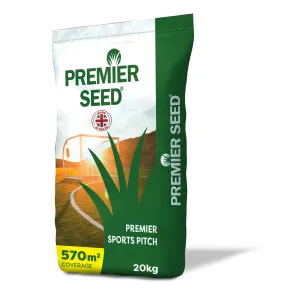Time to get your surfaces ready for next season or can do little by little with general maintenance.
Depending on everyone’s budget the extent of works can be very different, some will have a machine to completely remove the entire thatch layer, which in most cases contributes to poor drainage and waterlogging in the heavy rain seasons on your surfaces and have games called off.
Heavy scarification in conjunction will a terra rake/Uni-rake/stiff brushes to try and disturb the surface and get into the thatch layer as much as possible and to remove any existing weeds/moss and weak grass species. This process can be performed many times over to your specification.
Once you’re happy with the surface and is clear of all debris add top dressing to any low areas by hand to not allow low areas in germination and to build up later, for example: goal mouths, 18-yard areas and lineman’s runs.
The Premier Seed 100% 3-way rye mix will work very well. Depending on the extent of your surface’s clear out, the overseeding range will be between 25-50gms per m2.
When seeding you will need to use a disc seeder to allow the seed to be cut into the surface 10-15mm to be in contact with the soil.
Where budgets allow try to apply a minimum of 30-60 tonne of medium/fine sand per full size pitch.
Best practice is to sand dress over the top of seed to protect the seed away from pests. This will also increase the percentage of success and germination efficiency.
Aeration can be carried out last in this process if conditions are good to do so, as moisture is required within the soil. Otherwise, let your surface establish after 6-8 weeks of feeding and cutting and carry out when the conditions are right to do so.
I would suggest and application of feed such as an organic based slow-release fertiliser with Mycorrhiza (Nutri-grow Stress Defender) to boost the soil profile and to help with root system strength and stability. Alternatively Nutrigrow 18-3.5-8+Mg is a steady feed over 3 months.




